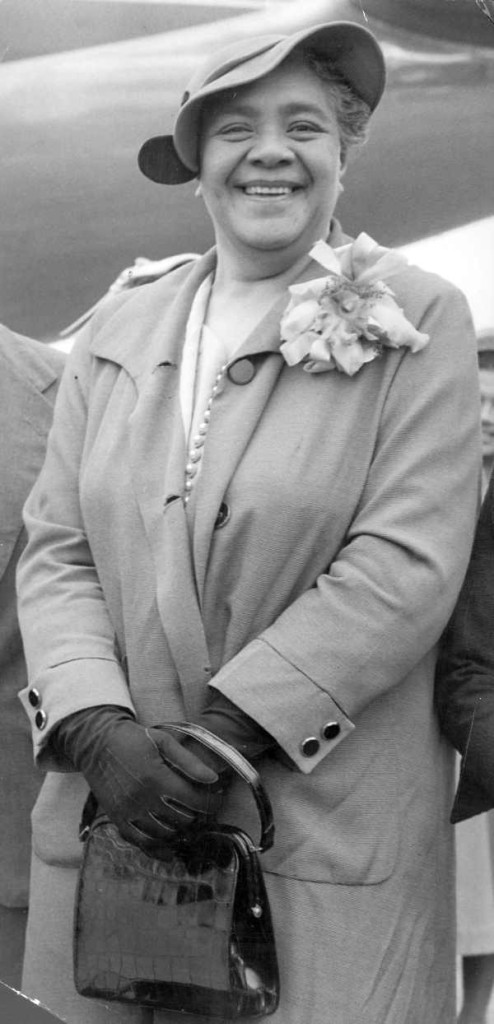After six weeks in paradise, in the lovely Kingdom of Tonga, we decided at the last minute to spend the weekend on nearby Fafá Island in Nuku‘alofa Lagoon. It turns out that, even living in paradise, one needs (make that two need) to take a break from day-to-day routines and relax in a slightly different atmosphere.
Actually, I quite surprised Sūsana Friday morning with my last-minute plans. We’ll go for the evening and, if we like it, we will extend an extra day, I told her. That’s exactly what we did. It took less than ten minutes being on the island before we announced to our concierge that we were staying two nights. It was love at first sight.

View of sky and palm trees on Fafá Island–quintessential Polynesia.
Fafá Island, 18 acres of unspoiled white sand and palm trees surrounded by crystal blue and green waters, is about four miles (6.5 km) north of the shoreline near our home in Fangaloto, a suburb of Nuku‘alofa. We can see it whenever we travel Vuna Road along the coast to and from town, usually several times each day.

Approaching Fafá Island with three of our fellow travelers riding atop the cabin.
It’s farther out and just to the left of Pangaimotu Island, itself only a mile (1.6 km) off our coast, famous for Big Mama’s restaurant and swimming place with the half-sunken ship that people like to climb on and jump off.
Motu means “island” in Tongan so Pangaimotu Island is redundant, but everyone calls it that, reminding us of when we lived in Fort Myers, Florida, USA, situated on the Caloosahatchee River. Yes, hatchee means “river” in native-American Seminole language. Redundancy abounds, but I digress.
We took the 5:30 pm launch from the wharf near the fish market and were landed on Fafá about 40 minutes later. The ride was delightful. The Pacific in the relative protection of Nuku‘alofa Lagoon had a slight chop and the occasional spray of seawater splashed our faces, but it was refreshing and ever-more exciting as we approached our weekend resort.

Sūsana on the launch ready to leave Nuku‘alofa for Fafá Island.
Without a dock on the island, we were transferred from the launch, actually a motorized sailboat, onto a motorized platform that gently ran aground on the beach. With a long gangway extended, we were able to step ashore onto dry land.

Landing on Fafá via motorized platform and gangway. Our launch, in the background, lies anchored in deeper waters.
How do I begin to describe Fafá Island? The food was amazing. No, really! It was amazing. We ate six meals during parts of three days and did not experience a single forkful of doubtful culinary craft. Flavors were bold when they needed to be and nuanced when subtlety was called for.
We ate fresh fruits, delightful salads of all kinds and main dishes made of beef, fish, chicken and eggs, all garnished with sauces ranging from beans, stewed tomatoes and bacon ranchero salsa to delicate freshly-made tarter to robust gravies and a light and sweet essence of Tongan-grown vanilla beans that we drizzled on marble cake.
Music in the restaurant was melodious and, for the most part, traditional Tongan repertoire. On Friday evening, there was a live band of men who sat around a kava bowl and crooned heavenly strains in their native language and accompanied themselves with four or five diverse stringed instruments. The volume was kept low, as it should be, so that we could converse over dinner without difficulty.
They then performed Tongan dances after dinner, but we didn’t stay, choosing to retire early.
Our accommodation was a traditional Tongan fale or house with the roof rounded at both ends. When Tongans arrived in the islands centuries ago, they mounted their upturned boats on poles to create houses. Or so they story goes.

Our fale on Fafá Island with sun deck, shaded porch and private yard. We did not lack for places to sit. Bedroom on the right demonstrates one end of the traditional curved Tongan roofline.
The overriding theme for our weekend at Fafá Island Resort was leisure time. We relaxed. We played rummy. We slept. We watched the bats, butterflies and birds, including a trio of beautiful blue, green and red parrots that took up residence near our porch. (Or had we taken up residence in their front yard?) We picked up shells. We swam and snorkeled. We laid in the hammock and read. We napped some more.

Sūsana relaxing in the hammock with the beach just through the trees.
We walked island trails to and from the open-air restaurant. We even hiked the beach all the way around the island, exploring tidal pools, sedimentary corals on the shore and experiencing the force of the prevailing wind in our faces as we moved from the sheltered, leeward side to the blustery, windward side of the island.

Tēvita on our hike around Fafá Island.
Most of all, we marveled that such a place exists just four miles from our Tongan home.
This morning, as we drove Vuna Road into town, we cast our eyes toward Fafá Island and, with an immense appreciation for the beauty of the earth, promised ourselves that we would go back again soon, when we need another break from paradise or just for the fun of it.
Fafá Island Resort has completely spoiled us. I’m sure that when we do make a day trip to Big Mama’s on Pangaimotu, with the draw of her sunken-ship diving platform, we will be quite disappointed, yet smug in our cleverness for having discovered Fafá first.
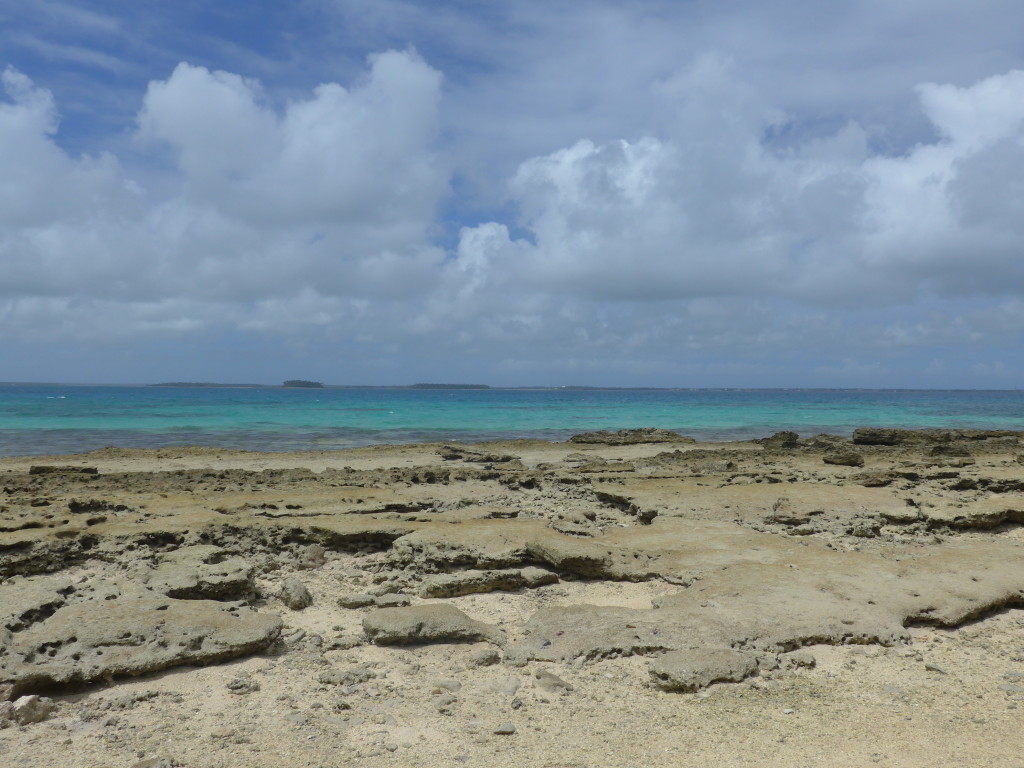
Fafá Island tidal pool at low tide.

Beautiful and unusual shells collected on the beach in front of our fale.
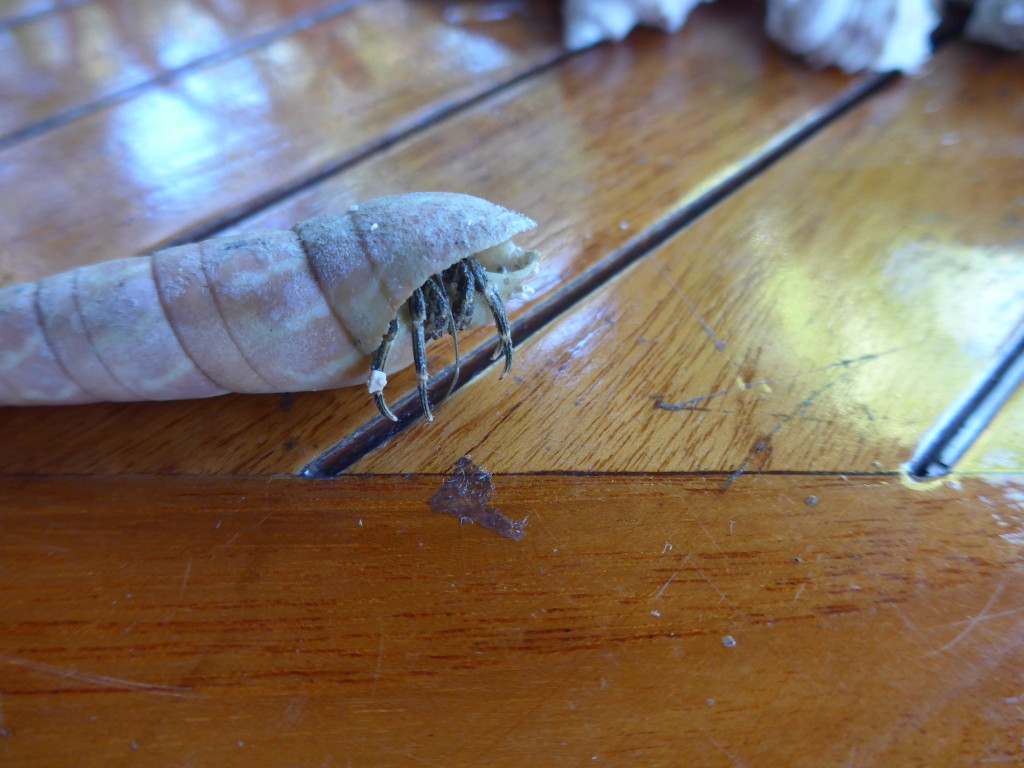
We could not convince this hermit crab to give up his shell home in exchange for another, less elegant abode. No matter what we did to gently coax him out, he would not budge. So we returned him and his spiraling shell to water’s edge on the beach–his beach.

Elegant bathroom and private garden shower in our Fafá Island fale.

Pacific Flying Fox (Pteropus tonganus), a species of large fruit bat, beka in Tongan, peers down at us from a palm frond in our yard on Fafá. This guy and several of his companions put on an aerial show at dusk each evening as they patrolled the island with their wingspans approaching six feet (1.83 meters). Though they appear menacing and remind me of the flying monkeys in The Wizard of Oz movie, they only eat pollen, nectar and fruit.
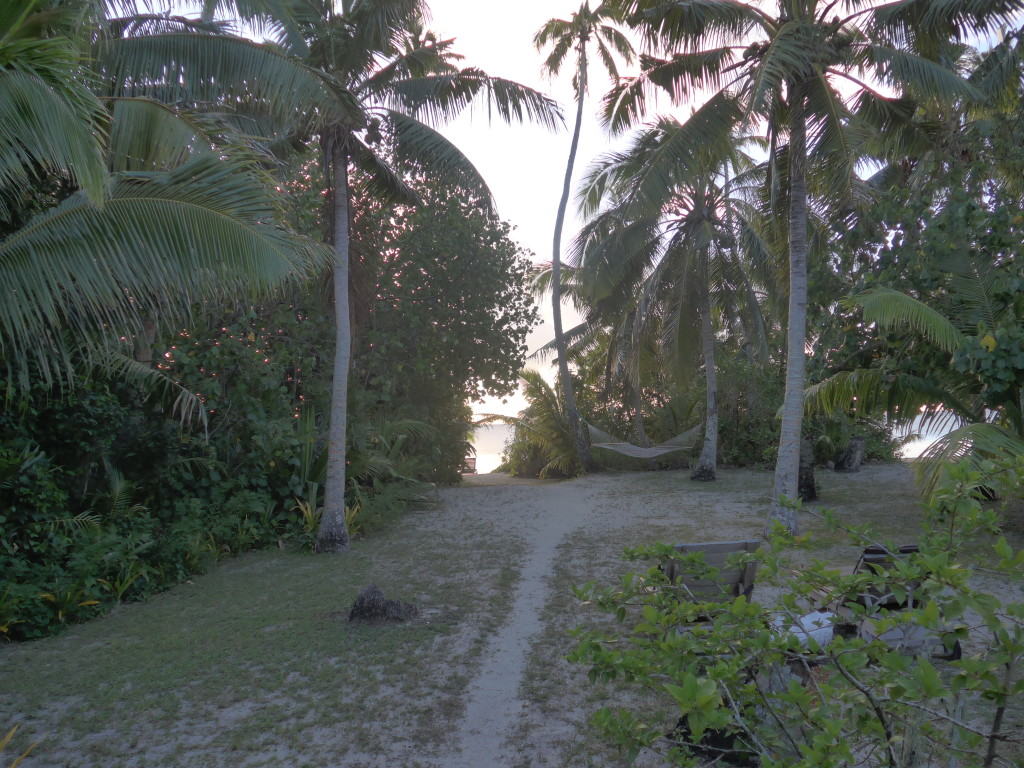
Front-yard path to hammock and Pacific Ocean beach.
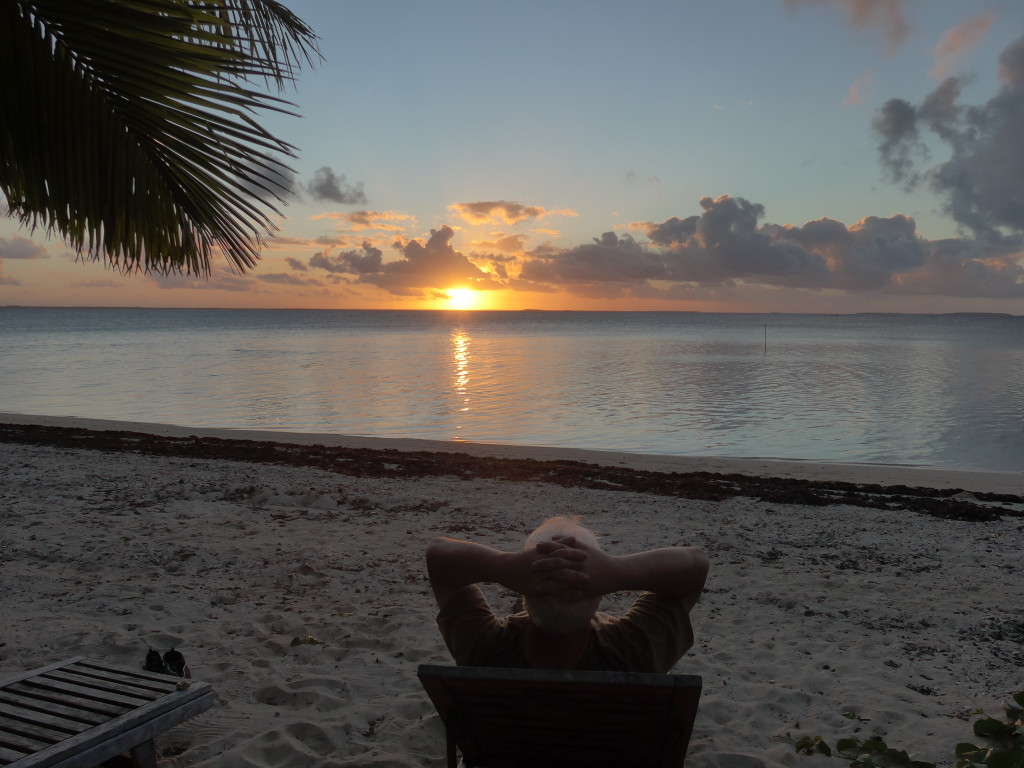
Day’s end with pre-dinner sunset on Fafá Island.



